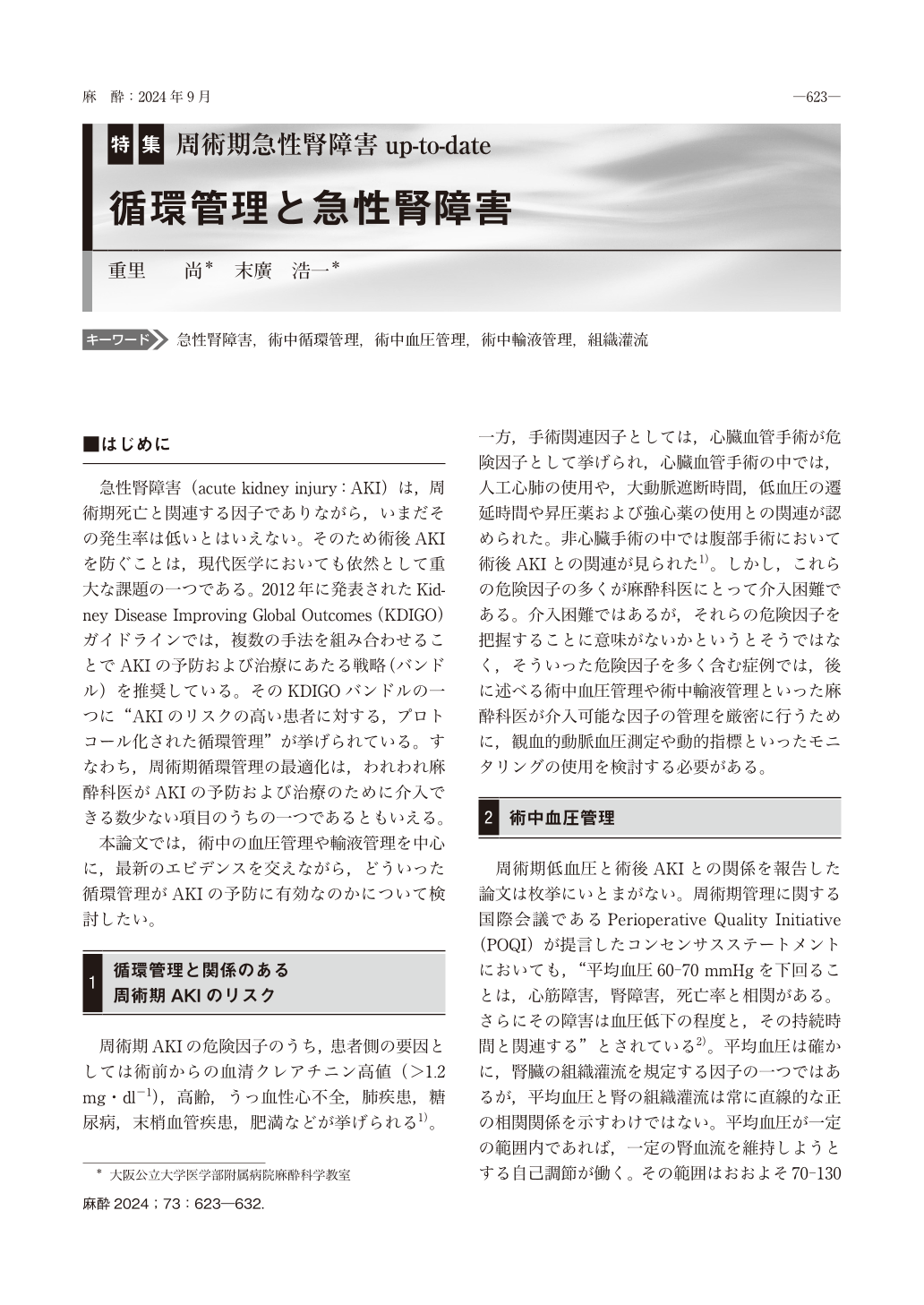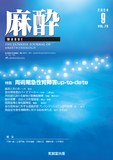Japanese
English
- 有料閲覧
- Abstract 文献概要
- 1ページ目 Look Inside
- 参考文献 Reference
はじめに
急性腎障害(acute kidney injury:AKI)は,周術期死亡と関連する因子でありながら,いまだその発生率は低いとはいえない。そのため術後AKIを防ぐことは,現代医学においても依然として重大な課題の一つである。2012年に発表されたKidney Disease Improving Global Outcomes(KDIGO)ガイドラインでは,複数の手法を組み合わせることでAKIの予防および治療にあたる戦略(バンドル)を推奨している。そのKDIGOバンドルの一つに “AKIのリスクの高い患者に対する,プロトコール化された循環管理” が挙げられている。すなわち,周術期循環管理の最適化は,われわれ麻酔科医がAKIの予防および治療のために介入できる数少ない項目のうちの一つであるともいえる。
本論文では,術中の血圧管理や輸液管理を中心に,最新のエビデンスを交えながら,どういった循環管理がAKIの予防に有効なのかについて検討したい。
Acute kidney injury(AKI)remains a significant factor associated with perioperative mortality, and its incidence continues to be a challenge in modern medicine. Preventing postoperative AKI remains a critical objective. Among the factors related to postoperative AKI for which anesthesiologists can intervene, intraoperative blood pressure management and fluid administration stand out. The definition of intraoperative hypotension and the parameters adopted for fluid-administration protocols may undergo future modifications;however, the prevention of intraoperative hypotension and the administration of appropriate fluid therapy are currently considered effective for maintaining adequate circulation in order to prevent postoperative AKI. Careful consideration of individual patient complications and surgical procedures is crucial. Proactive circulatory management that specifically addresses intraoperative hypotension and fluid administration during surgery and is based on patient-specific factors has thus been deemed effective for the prevention of postoperative AKI.

Copyright © 2024 KOKUSEIDO CO., LTD. All Rights Reserved.


